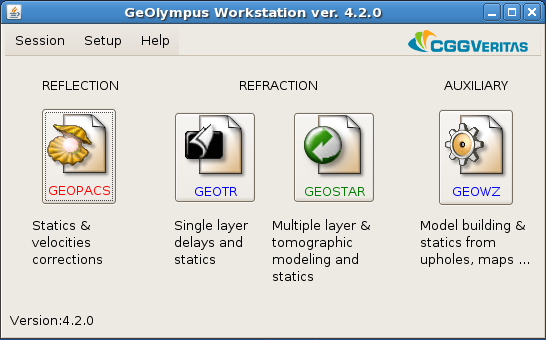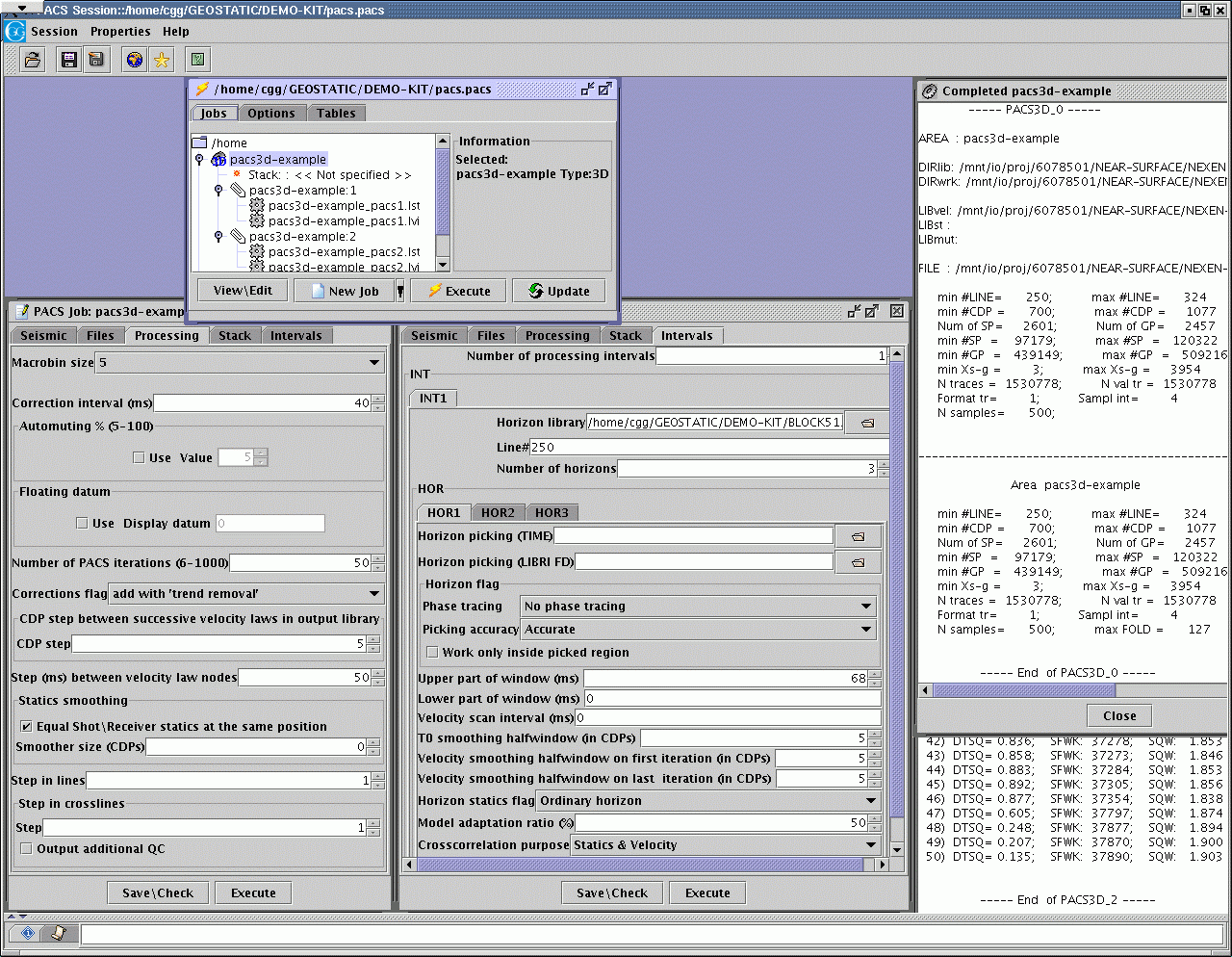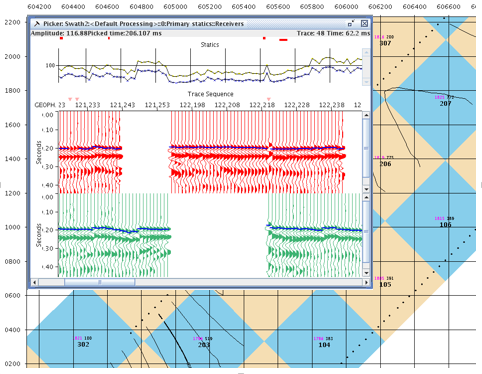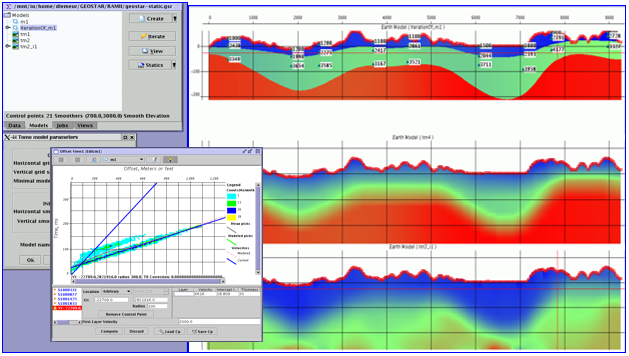GeOlympus workstation is designed to build near-surface models (GeoStaR and GeoWZ), calculate (GeoTR) and autocorrect statics and NMO (PACS).
This software is being developed since 2003 in Geoleader Ltd., and since 2010 it is transformed to CGG (CGGV) and now it is a part of Geovation advanced package.
The main idea is to calculate statics in different seismic conditions.
GeOlympus software is used in almost all processing centers using Geocluster\Geovation software.
GeOlympus facilities are to use the following modules:

- GeoPACS (provided only by Geoleader Ltd.) defines statics and NMO based on priori distribution of PP, SS or PS velocities and horizon times specified on model interval or on all stack traces. An auto-correction of statics and NMO is done. GeoPACS allows to define horizons by stack traces, determine automatically the position of horizons from data of neighbor gather or line, calculate short-wavelength (including with trend removal) as well as mid-wavelength statics. It is possible to determine large-amplitude static corrections (100ms – 400ms for S-wave statics) due to fine horizon definition.

- GeoTR – solution to define delays and refractor velocities layer by layer, calculate statics, perform source/receiver repositioning and other tasks. It performs fast processing of large 2D and 3D data volumes in case of simple near-surface structure.

- GeoStaR – interactive tool which allows to build and refine near-surface models and calculate weathering corrections using first breaks of head (diving) waves.
GeoStaR can be used when there is a multi-layer or spatial velocity/depth-variable weathering zone i.e. when it is impossible to define offset range within which first breaks are defined by head wave from dominant refractor. GeoStaR includes cluster modules to refine grid models.
- GeoWZ allows to load and interpret microseismic logs, digitize first arrivals, build surfaces based on the results of interpretation, create layered near-surface models by combining built and loaded surfaces, calculate static corrections on near-surface models.

The advantage of GeOlympus is that it can be used within Geovation as well as with other software packages.
System requirements: Linux (CentOS\RHEL 5+)
Future developments are defined by integration with new versions of Geovation software (CGG).



